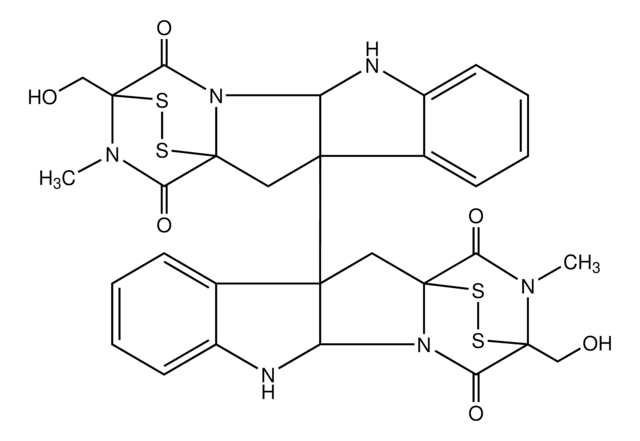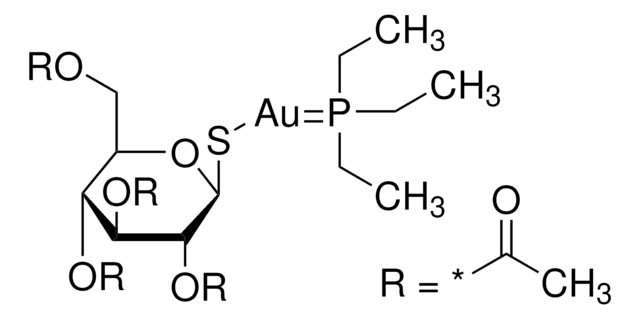C9623
Chetomin
from Chaetomium cochliodes, ≥98% (HPLC)
Sinônimo(s):
Chaetomin, NSC 289491
About This Item
Produtos recomendados
fonte biológica
Chaetomium cochliodes
Nível de qualidade
Ensaio
≥98% (HPLC)
Formulário
powder
solubilidade
DMSO: soluble
acetone: soluble
ethyl acetate: soluble
temperatura de armazenamento
−20°C
cadeia de caracteres SMILES
S1SC9(N(C(=O)C1(N(C9=O)C)CO)C)Cc2c3c([n](c2)C54C(N7C8(SSC(N(C8=O)C)(C7=O)CO)C5)Nc6c4cccc6)cccc3
InChI
1S/C31H30N6O6S4/c1-33-25(42)30(15-38)34(2)23(40)28(33,44-46-30)12-17-13-36(21-11-7-4-8-18(17)21)27-14-29-24(41)35(3)31(16-39,47-45-29)26(43)37(29)22(27)32-20-10-6-5-9-19(20)27/h4-11,13,22,32,38-39H,12,14-16H2,1-3H3
chave InChI
ZRZWBWPDBOVIGQ-UHFFFAOYSA-N
Ações bioquímicas/fisiológicas
Palavra indicadora
Danger
Frases de perigo
Declarações de precaução
Classificações de perigo
Acute Tox. 3 Oral
Código de classe de armazenamento
6.1C - Combustible acute toxic Cat.3 / toxic compounds or compounds which causing chronic effects
Classe de risco de água (WGK)
WGK 3
Ponto de fulgor (°F)
Not applicable
Ponto de fulgor (°C)
Not applicable
Escolha uma das versões mais recentes:
Já possui este produto?
Encontre a documentação dos produtos que você adquiriu recentemente na biblioteca de documentos.
Os clientes também visualizaram
Nossa equipe de cientistas tem experiência em todas as áreas de pesquisa, incluindo Life Sciences, ciência de materiais, síntese química, cromatografia, química analítica e muitas outras.
Entre em contato com a assistência técnica















